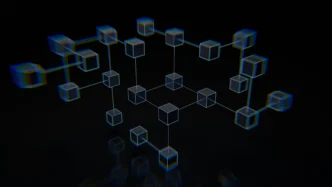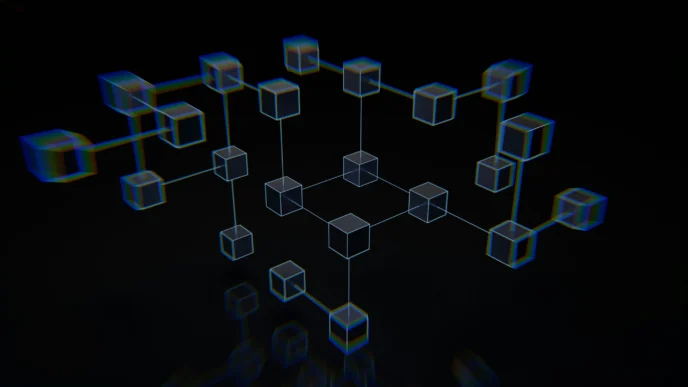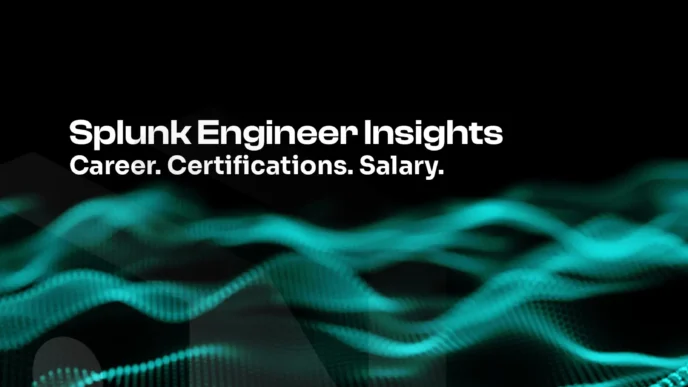Establishing a robust cybersecurity framework requires more than isolated tools. Enterprises now rely on a blend of EDR, SIEM, SOAR, and additional solutions to form an integrated endpoint strategy. This guide explains each component, outlines recent industry advancements, and offers a roadmap for deploying an effective endpoint strategy that highlights leading solutions.
The Imperative for a Comprehensive Endpoint Strategy
Cyber threats evolve continuously. Recent breaches emphasize the need for a layered defense that includes real-time detection, in-depth monitoring, and swift response capabilities. The focus keyphrase, endpoint strategy, embodies this holistic approach. Enterprises must evaluate which tools match their needs and integrate seamlessly.
Data breaches and ransomware incidents are increasing. Studies by leading analysts underscore that a multi-tool approach reduces risk. Enterprises are adopting technologies that detect threats earlier and coordinate responses faster—a necessity when defending both traditional and remote endpoints.
Core Components of a Modern Endpoint Strategy
A sound endpoint strategy leverages several core technologies. The following sections detail the primary components driving today’s cybersecurity defenses while naming two or three of the most established solutions in each category.
EDR: Essential for Advanced Threat Detection
Endpoint Detection and Response (EDR) solutions are at the forefront of threat detection. They monitor endpoint activities, capture behavioral data, and identify anomalies, providing real-time alerts for immediate investigation.
Leading EDR Solutions:
- CrowdStrike Falcon: Widely recognized for its rapid threat detection and cloud-native architecture.
- SentinelOne: Praised for its automated response capabilities and comprehensive visibility.
- Microsoft Defender for Endpoint: Integrated with Windows environments and scalable across enterprises.
These tools incorporate machine learning and behavioral analytics, enabling faster detection of zero-day attacks. Their ability to integrate with other security platforms further reduces false positives, ensuring they remain a critical element of your endpoint strategy.
SIEM: Centralized Security Information and Event Management
Security Information and Event Management (SIEM) platforms consolidate logs and event data from various sources, creating a centralized view of an enterprise’s security posture. This correlation of data ensures that suspicious activities across the network are identified swiftly.
Top SIEM Solutions:
- Splunk: Known for its robust analytics and scalability, offering deep insights through real-time dashboards.
- IBM QRadar: Valued for its comprehensive incident detection and forensic capabilities.
- LogRhythm: Appreciated for its ease of deployment and smooth integration with other security tools.
Modern SIEM solutions have shifted toward cloud-based analytics, enhancing scalability and reducing the time to detect threats. Integrating SIEM with EDR data refines threat visibility, seamlessly bridging the gap between detection and action.
SOAR: Streamlining Incident Response with Automation
Security Orchestration, Automation, and Response (SOAR) platforms are designed to ease the burden on security analysts by automating routine tasks. They collect data from EDR, SIEM, and other sources to automate tasks like alert triage and containment protocol initiation.
Industry-Leading SOAR Solutions:
- Palo Alto Cortex XSOAR: Renowned for its extensive playbook library and integration capabilities.
- Splunk Phantom: Recognized for its flexibility and strong automation of incident response workflows.
- IBM Resilient: Praised for its dynamic orchestration and real-time collaboration features.
SOAR platforms speed up response times by automatically activating predefined workflows upon detecting a threat. This minimizes human error and ensures a coordinated, swift response across all integrated security tools.
Beyond EDR, SIEM, and SOAR: Additional Tools and Considerations
While EDR, SIEM, and SOAR form the foundation, other technologies also play key roles in a comprehensive endpoint strategy.
Threat Intelligence Platforms (TIP)
TIPs aggregate threat data from global sources, providing essential contextual insights to inform risk assessments and proactive measures.
Notable TIP Solutions:
- Recorded Future: Provides actionable intelligence with real-time threat updates.
- Anomali: Offers comprehensive threat detection and integration with existing security tools.
Endpoint Privilege Management (EPM)
EPM tools enforce least-privilege access controls, reducing risks from insider threats and unauthorized system changes.
Leading EPM Solutions:
- CyberArk: Offers robust identity and access management tailored for critical systems.
- BeyondTrust: Known for its effective privilege management across diverse IT environments.
Network Detection and Response (NDR)
NDR solutions monitor network traffic to detect anomalies that might bypass endpoint security, filling critical gaps.
Prominent NDR Solutions:
- Vectra AI: Uses AI to analyze network behavior and detect sophisticated threats.
- Darktrace: Applies machine learning to identify and mitigate abnormal network activities.
Vulnerability Management Solutions
Regular vulnerability scanning is essential to identify and mitigate risks before attackers can exploit them.
Key Vulnerability Management Solutions:
- Tenable Nessus: Widely used for its comprehensive vulnerability scanning capabilities.
- Rapid7 InsightVM: Provides continuous monitoring and prioritizes remediation based on risk assessment.
Integrating these additional layers into your endpoint strategy builds a resilient security architecture, addressing multiple facets of cybersecurity and ensuring no single point of failure compromises your enterprise.
Crafting an Integrated Endpoint Strategy
Designing an endpoint strategy starts with understanding your organization’s threat landscape. Enterprises must perform a thorough risk assessment to pinpoint key assets and potential vulnerabilities. With these insights, selecting the right mix of tools becomes more straightforward.
Evaluating Current Infrastructure and Needs
Begin by reviewing your existing security measures. Identify gaps where new technologies can add substantial value. Involve stakeholders from IT, risk management, and executive leadership. Their diverse perspectives provide a holistic view of your security posture. Consider these key questions:
- Which endpoints are most vulnerable to attack?
- What data and assets require the highest level of protection?
- How swiftly can the current setup detect and respond to emerging threats?
Answering these questions helps tailor an endpoint strategy to your organization’s specific needs, ensuring each tool enhances your overall cybersecurity defenses.
Integration and Interoperability
A major challenge is ensuring that the selected tools work together seamlessly. Integration is vital for efficient threat detection and response. EDR, SIEM, and SOAR must communicate in real time to avoid data silos that delay response times. Prioritize solutions supporting standard protocols and robust APIs for smooth integration.
Many vendors now offer unified security platforms that combine multiple functionalities under a single dashboard. These integrated solutions simplify management, reduce training overhead, and provide a comprehensive view of security operations. They should be a primary consideration when designing your endpoint strategy.
Scalability and Future-Proofing
Cyber threats are evolving at a rapid pace. An effective endpoint strategy must be adaptable and scalable as the organization grows. It should also accommodate new threat vectors driven by cloud adoption, remote work, and IoT proliferation. Investing in scalable and future-proof solutions is essential.
Future-proofing involves continuous monitoring and periodic updating. Regularly review performance metrics, update threat intelligence, and integrate feedback from incident responses. An agile approach ensures your endpoint strategy remains aligned with evolving threats.
Industry Trends Shaping Endpoint Security
Recent industry studies indicate a notable shift toward automation and integration. Organizations are increasingly favoring solutions that combine EDR, SIEM, and SOAR functionalities, reducing complexity and accelerating response times. Key trends include:
- Artificial Intelligence and Machine Learning: These technologies enhance threat detection by identifying subtle anomalies and reducing false positives.
- Cloud-Native Security Solutions: As more enterprises adopt cloud infrastructures, vendors are offering agile, scalable solutions optimized for cloud environments.
- Behavioral Analytics: Monitoring user behavior helps in detecting insider threats, providing insights into deviations from normal patterns.
- Zero Trust Architectures: Zero trust reinforces continuous verification, integrating endpoint security tightly with network policies.
Aligning your endpoint strategy with these trends not only mitigates risks but also positions your organization for long-term resilience.
Implementation Roadmap for a Successful Endpoint Strategy
Deploying a comprehensive endpoint strategy involves several key steps:
- Conduct a Comprehensive Risk Assessment: Identify assets, vulnerabilities, and threat actors to form the foundation of your strategy.
- Define Clear Objectives: Set measurable targets for detection speed, incident response, and overall security posture.
- Select the Right Mix of Tools: Choose a blend of EDR (e.g., CrowdStrike Falcon, SentinelOne, Microsoft Defender), SIEM (e.g., Splunk, IBM QRadar, LogRhythm), SOAR (e.g., Palo Alto Cortex XSOAR, Splunk Phantom, IBM Resilient), and complementary solutions like TIPs, EPM, NDR, and vulnerability management.
- Pilot the Strategy: Implement the strategy in a controlled environment, monitoring performance and gathering feedback.
- Scale and Optimize: Expand the implementation across the enterprise once validated. Continuously monitor and adjust as threats evolve.
- Educate and Train Staff: Provide regular training on new tools and protocols, ensuring that all team members are well-equipped to handle threats.
- Regularly Update and Test the System: Conduct frequent vulnerability assessments and penetration tests to ensure that the endpoint strategy remains robust.
This roadmap enables enterprises to deploy an endpoint strategy that is agile, integrated, and effective against modern cyber threats.
Final Thoughts: Adapting to a Dynamic Cyber Landscape
Choosing the right endpoint strategy is pivotal to an enterprise’s overall cybersecurity posture. By integrating leading solutions for EDR, SIEM, SOAR, and additional supporting technologies, organizations can detect threats early, respond swiftly, and minimize potential damage. Continuous evaluation and adaptation ensure that the strategy remains effective against evolving threats.
A dynamic approach that emphasizes integration and automation empowers enterprises to secure their assets effectively. As threats become more sophisticated, so must the defenses. Now is the time to reassess your endpoint strategy. Engage with cybersecurity experts, review your current infrastructure, and adopt a proactive stance.













